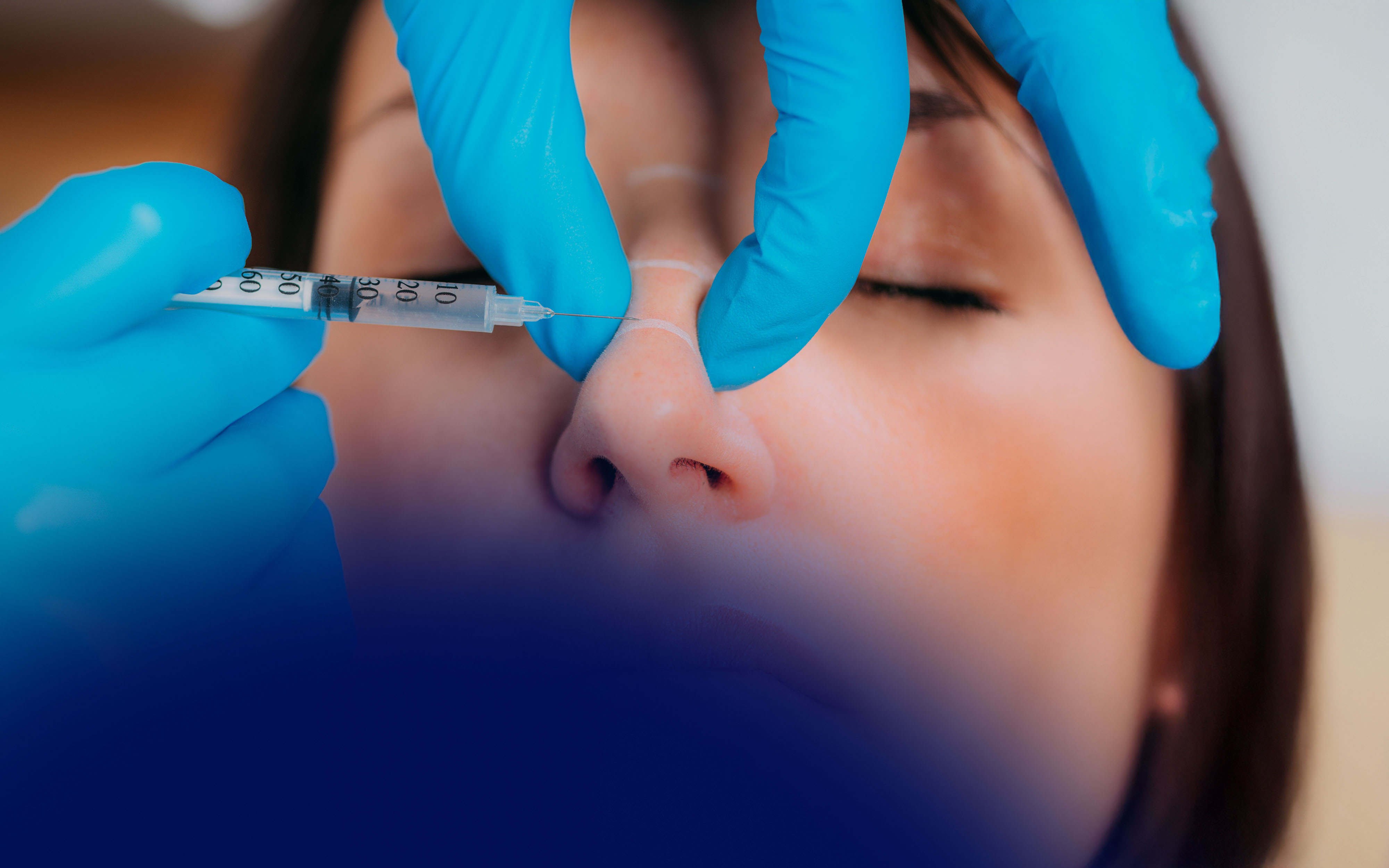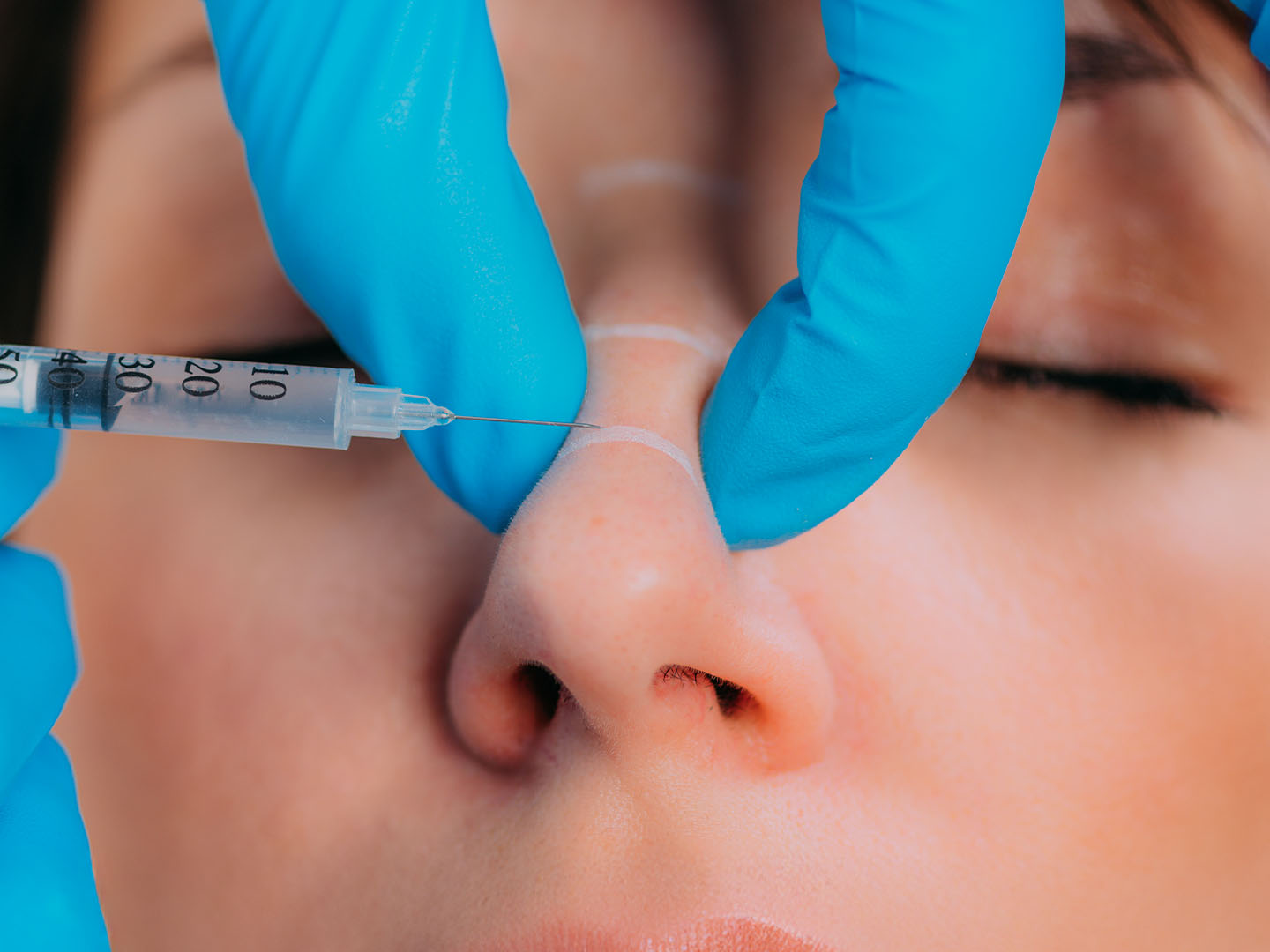
A liquid nose job, also known as liquid rhinoplasty or non-surgical rhinoplasty, is an increasingly popular alternative to traditional surgery. Using dermal fillers, injectors can reshape and refine nasal contours without invasive techniques or long recovery times.
Advanced training is key to safe practice. Providers seeking to enhance their skills can explore Non-Surgical Nasal Contouring Training, which equips injectors with specialized knowledge for natural, predictable results.
Key Takeaways
- Liquid nose job uses hyaluronic acid-based dermal fillers to contour and reshape the nose.
- Ideal for patients seeking subtle corrections such as smoothing dorsal humps, lifting the tip, or enhancing nasal symmetry.
- Provides immediate results with little downtime, lasting 9–18 months on average.
- Risks include bruising, swelling, and rare vascular complications, emphasizing the need for proper training.
What Is a Liquid Nose Job?
A liquid nose job is a minimally invasive procedure where dermal fillers are injected to alter the shape of the nose. Most injectors prefer hyaluronic acid-based fillers due to their safety profile and reversibility with hyaluronidase. The treatment focuses on contouring the nasal bridge, refining the tip, and creating a balanced profile.
Unlike surgical rhinoplasty, which requires incisions and a lengthy recovery, non-surgical rhinoplasty offers patients quick results with minimal discomfort. While it cannot reduce nasal size, it excels in refining proportions, addressing dorsal humps, straightening mild irregularities, and enhancing symmetry.
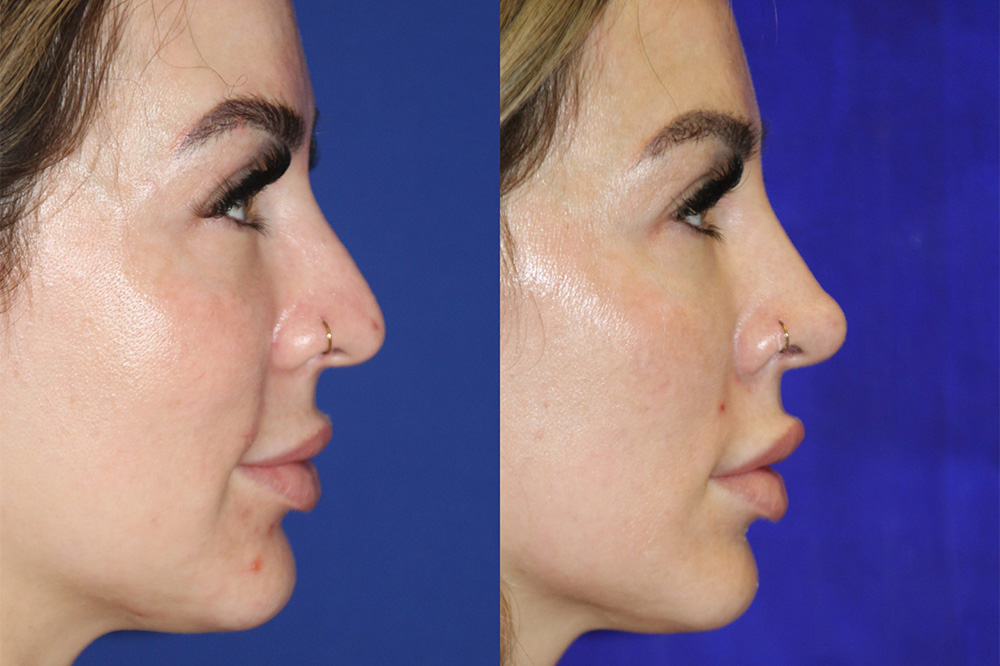
Who Makes the Best Candidate?
Liquid rhinoplasty is suitable for patients seeking minor adjustments rather than dramatic reshaping. Ideal candidates include those with dorsal humps, asymmetry, low nasal bridges, or underdefined tips. Patients looking for a non-invasive alternative before committing to surgery often find this treatment appealing.
However, patients with large noses, severe deformities, or functional breathing issues are not good candidates. In these cases, surgical rhinoplasty remains the gold standard. Careful patient selection and expectation management are critical for long-term satisfaction.
Preparation Before Treatment
Before performing a liquid nose job, careful preparation is essential to ensure patient safety and achieve the best possible results. Both practitioners and patients must follow evidence-based steps to minimize complications and optimize outcomes:
- Detailed medical history: Screen for contraindications such as bleeding disorders, autoimmune conditions, prior nasal surgeries, or a history of vascular complications.
- Medication adjustments: Advise patients to stop aspirin, NSAIDs, anticoagulants, and supplements such as vitamin E or ginkgo a few days before treatment to lower bruising risk.
- Standardized photography: Capture pre-treatment images to document nasal anatomy and provide accurate before-and-after comparisons.
- Expectation management: Clarify that liquid rhinoplasty improves contour and symmetry but cannot reduce nasal size or correct functional breathing issues.
- Informed decision-making: Discuss all potential benefits, limitations, risks, and maintenance needs so patients can make educated choices.
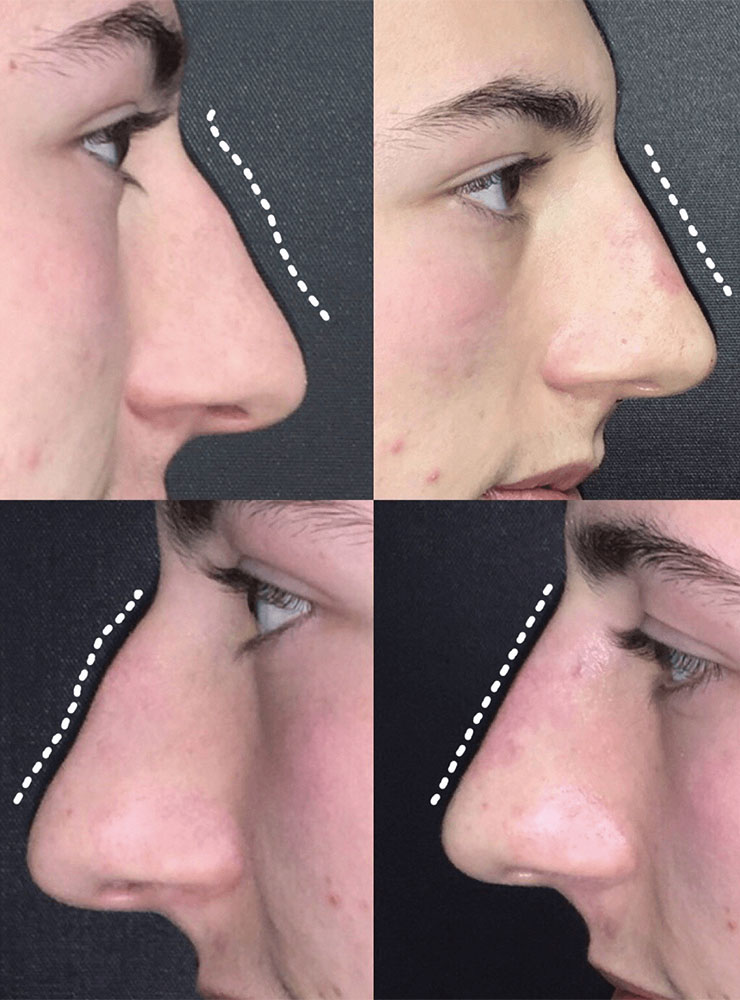
How the Procedure Is Performed
Performing a liquid nose job requires precision, anatomical expertise, and strict adherence to safety protocols. The procedure is typically completed within 15-30 minutes in a clinical setting. After cleansing and marking, dermal filler is injected strategically to correct irregularities and enhance symmetry.
Injection sites are commonly selected along the radix, dorsum, supratip, and nasal tip, with occasional placement in the columella for projection. Knowledge of the angular and dorsal nasal arteries is crucial to minimize vascular risks.
The choice between needle and cannula depends on patient anatomy, though many practitioners prefer cannulas for enhanced safety. Conservative filler placement in micro-aliquots reduces the likelihood of overcorrection and complications.

What Results Should Patients Expect?
Patients generally see improvement immediately after treatment. Mild swelling or erythema may temporarily obscure the final contour but typically resolves within days. Longevity of results ranges from 12-18 months with most high-cohesivity hyaluronic acid fillers, though duration varies with rheology, injection depth, and individual metabolism.
While highly effective for contouring, liquid rhinoplasty can’t reduce nasal size or resolve functional airway issues. Repeat treatments are recommended to maintain dorsal contour and tip definition, and patient education should emphasize these limitations clearly.
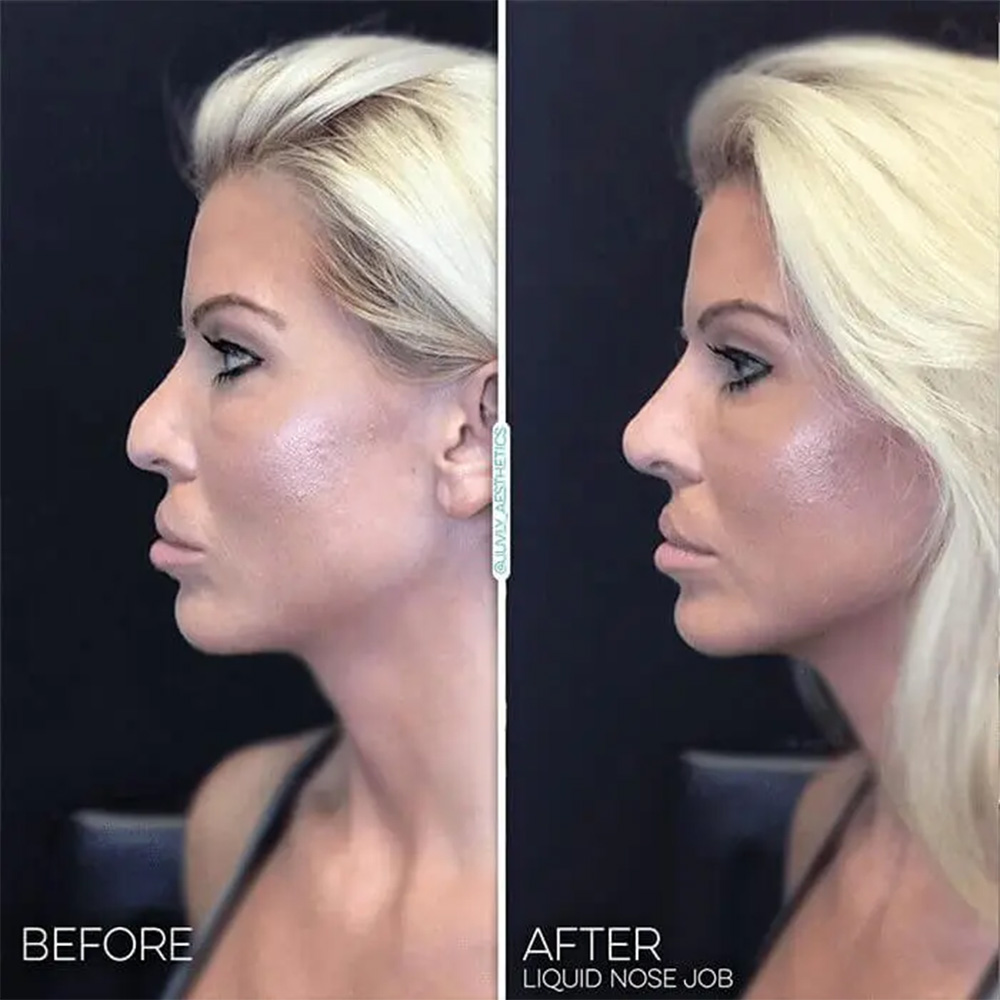
What Side Effects Can Patients Expect?
Typical post-treatment effects may involve localized swelling, redness, tenderness, or bruising at the injection sites. These reactions are generally mild, resolve within a few days, and should be explained to patients as expected aspects of the recovery period.
Although uncommon, serious complications can occur. Published reports estimate vascular occlusion rates below 1%, yet outcomes such as tissue necrosis or even blindness have been linked to filler embolization of the ophthalmic or dorsal nasal artery.
Dealing with Risks and Complications After a Non-Surgical Nose Job
Practitioners must adopt strict safety protocols to manage potential complications. Techniques such as aspirating before injections, using small filler volumes, and employing cannulas when appropriate reduce risks. Hyaluronidase should always be available to dissolve filler in emergencies.
Patients should be thoroughly educated on warning signs, such as sudden pain, skin discoloration, or vision changes. Urgent medical evaluation is critical if these symptoms arise, reinforcing the importance of aftercare instructions and follow-up.
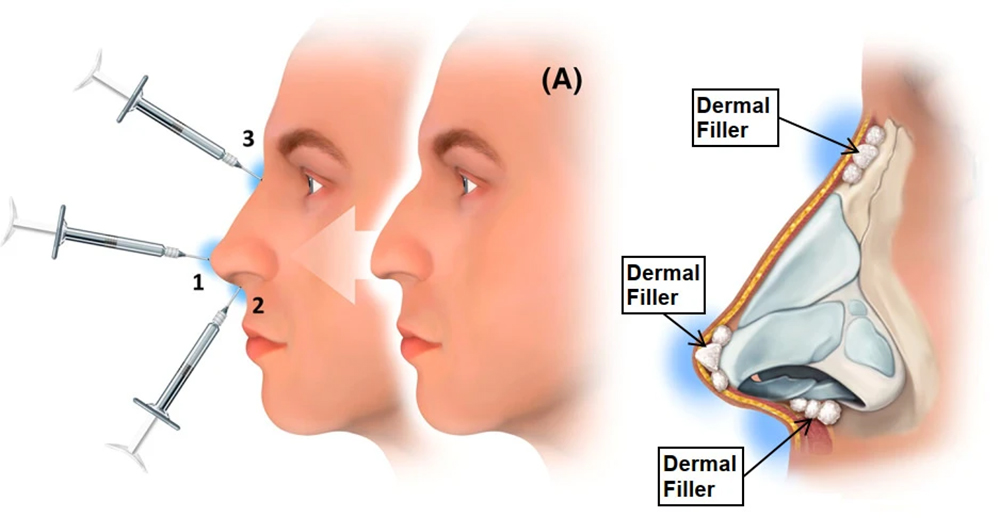
Liquid Nose Job Aftercare
Aftercare plays an important role in maintaining safe and satisfactory results. Patients should receive clear guidance following treatment to minimize complications and support recovery:
- Avoid pressure: Patients should avoid wearing heavy glasses or pressing on the treated area for at least a week.
- Limit activity: Strenuous exercise, saunas, or excessive sun exposure should be avoided for 24-48 hours to reduce swelling and bruising risk.
- Manage side effects: Mild redness, swelling, or bruising is expected and typically resolves within a few days. Applying cool compresses may help.
- Monitor for warning signs: Sudden pain, skin discoloration, or vision changes require immediate medical attention and urgent follow-up.
- Follow-up appointments: Scheduling a review visit allows the practitioner to assess results and determine if minor adjustments or touch-ups are necessary.

The Bottom Line
A liquid nose job can deliver transformative yet natural-looking improvements when performed by a skilled injector. The procedure allows patients to refine nasal contours without invasive surgery, but safety and expertise are essential. Practitioners should continue pursuing aesthetic medical training at HubMed Ed and advanced nose filler training to refine their skills and provide safe, consistent outcomes.
By combining technical expertise with patient-centered care, medical professionals can ensure liquid rhinoplasty remains a trusted, effective option for non-surgical nasal reshaping.
FAQs
What age is best for nose filler?
Most practitioners recommend waiting until nasal growth is complete, typically after age 18. Treatment decisions should also factor in maturity, patient goals, and overall health.
How many times can you do liquid rhinoplasty?
There is no set limit, but maintenance treatments every 9-18 months are common. Long-term safety depends on injector skill and patient-specific factors.
Are nose fillers FDA approved?
Yes, hyaluronic acid-based fillers used in nasal contouring are FDA-approved for cosmetic use. However, their application in the nose is considered off-label, requiring expert injector knowledge.
Is liquid rhinoplasty painful?
Discomfort is generally minimal. Topical anesthetics or fillers containing lidocaine help reduce pain, and most patients tolerate the procedure well.
Is liquid nose job permanent?
No, results are temporary and last 9-18 months on average. Over time, the filler naturally breaks down and the nose returns to its baseline shape.
What happens when nose filler wears off?
Once the filler dissolves naturally, the nasal shape reverts to its original form. Patients may opt for repeat treatments or consider surgical options.
How many units for liquid rhinoplasty?
The amount varies depending on anatomy and goals, but most treatments require 0.5-1.5 mL of filler. Conservative dosing ensures natural results and safety.
References:
- Cleveland Clinic. Nonsurgical rhinoplasty. Cleveland Clinic website. Updated 2024. Accessed September 10, 2025. https://my.clevelandclinic.org/health/treatments/22880-nonsurgical-rhinoplasty-nose-job
- Hall SS, Kontis TC. Nonsurgical rhinoplasty. World J Otorhinolaryngol Head Neck Surg. 2023;9(3):212-219. doi:10.1002/wjo2.104. PMID: 37780677; PMCID: PMC10541163. https://pmc.ncbi.nlm.nih.gov/articles/PMC10541163/
- Giammarioli G, Liberti A. Non-surgical rhinoplasty technique: An innovative approach for nasal reshaping with hyaluronic acid fillers. J Cosmet Dermatol. 2023;22(7):2054-2062. doi:10.1111/jocd.15669. https://onlinelibrary.wiley.com/doi/10.1111/jocd.15669
- Al-Taie DS, AlEdani EM, Gurramkonda J, et al. Non-surgical rhinoplasty (NSR): A systematic review of its techniques, outcomes, and patient satisfaction. Cureus. 2023;15(12):e50728. doi:10.7759/cureus.50728. PMID: 38234960; PMCID: PMC10792339. https://pmc.ncbi.nlm.nih.gov/articles/PMC10792339/
Disclaimer:
This article is intended for licensed medical professionals. All protocols, dosages, and treatment insights referenced herein are based on published literature. The content is not intended to encourage application, diagnosis, or self-treatment of unlicensed individuals, and should not be used as a substitute for the clinical judgment of a qualified healthcare provider.
